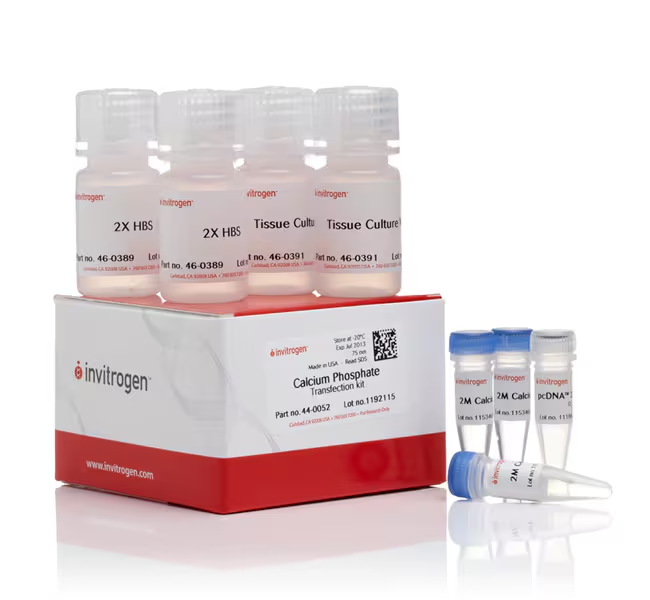
The Calcium Phosphate Transfection Kit provides high-quality reagents to enable the introduction of DNA into eukaryotic cells via calcium phosphate co-precipitation.
How it works
The calcium phosphate transfection method for introducing DNA into mammalian cells is based on forming a calcium phosphate-DNA precipitate. Calcium phosphate facilitates the binding of the DNA to the cell surface. DNA then enters the cell by endocytosis. The method was first developed by Graham and van der Ebb and was later modified by Wigler. The procedure is routinely used to transfect a wide variety of cell types for transient expression or for producing stable transformants. The DNA is mixed directly with a concentrated solution of CaCl2, which is then added dropwise to a phosphate buffer to form a fine precipitate. Aeration of the phosphate buffer while adding the DNA-CaCl2 solution helps to ensure that the precipitate that forms is as fine as possible, which is important because clumped DNA will not adhere to or enter the cell as efficiently.
| Code | Description |
|---|---|
| K278001 | Catalog Number: K278001 |

